Micromobility is here to stay, and it’s changing how we experience urban life for the better. With Unagi’s membership program, you can enjoy all the benefits of a top-tier electric scooter without the sky-high price of ownership or the inconvenience of ride-sharing.
What happens if you pit the NIU KQi3 Pro against the Segway Ninebot Max G30? Which scooter comes out on top?
One is a tried-and-tested name that has been in the electric scooter industry for over two decades, the other is a relatively new kid on the block—but, which will come out on top?
While the NIU KQi3 Pro is referred to as the “SUV” of the scooter world, the Segway Ninebot Max G30 takes everything to the max (literally)—we’re talking portability, mobility, versatility, and quality. NIU has revolutionized electric scooter affordability; Segway is backed by a name that offers unparalleled trust.
Despite all this, these electric scooters actually have a lot more in common than they do different, from their hill-climbing capabilities to their motor size. Plus, both have exceptionally robust designs that can handle any demands your daily commute throws at you. It’s no wonder you’re having a hard time deciding which is really the better investment!
That’s where this article comes in—we’ll dive into the nitty gritty to uncover which scooter really comes out on top in the battle of the SUV vs the Max.
NIU KQi3 Pro vs Segway Ninebot Max G30 Comparison Table
Let’s take a quick look at the key features that set the NIU KQi3 Pro and Segway Ninebot Max G230 apart.
| Scooter Specs | Segway Ninebot Max G30 | NIU KQi3 Pro |
|---|---|---|
| Cost | $599-$999 | $499-$799 |
| Motor | 350 W | 350 W |
| Battery | 551 Wh | 486 Wh |
| Top Speed | 18.6 mph | 20 mph |
| Range | 40.4 miles | 31 miles |
| Brakes | Regenerative braking system | Regenerative braking system |
| Scooter Weight | 41.2 lbs | 44.8 lbs |
| Max Rider Weight | 220 lbs | 265 lbs |
| Construction Materials | Aluminum | Aluminum |
| Tires | Self-healing tires | Pneumatic tires |
| Lights | Front light | Front and rear lights |
| Battery Charge Time | 6 hours | 6 hours |
| Weather Resistance | IPX5 | IP54 |
| Climbing Angle | 20 degrees | 20 degrees |
| Suspension | None | None |
Cost
Let's start with one of the most important aspects to consider when making any type of purchase: the cost. Depending on whether you're able to find the scooters on special, you’re looking at paying around $499 to $799 for the NIU KQi3 Pro and between $599 and $999 for the Segway Ninebot Max G30.
While the Ninebot Max G30 is obviously the more expensive option, the price difference isn't huge. Some people find that the extra couple hundred bucks don't matter that much in the long run. But the question is: Has Segway included enough quality features in the Ninebot Max G30 to make it worth the extra cost?
Well, that depends on which features are the most important to you. Some people may see the extra cost as totally worth it, while others may deem the NIU KQi3 Pro as the only scooter worth their hard-earned cash. Let's dive into the major differences so you can decide for yourself.
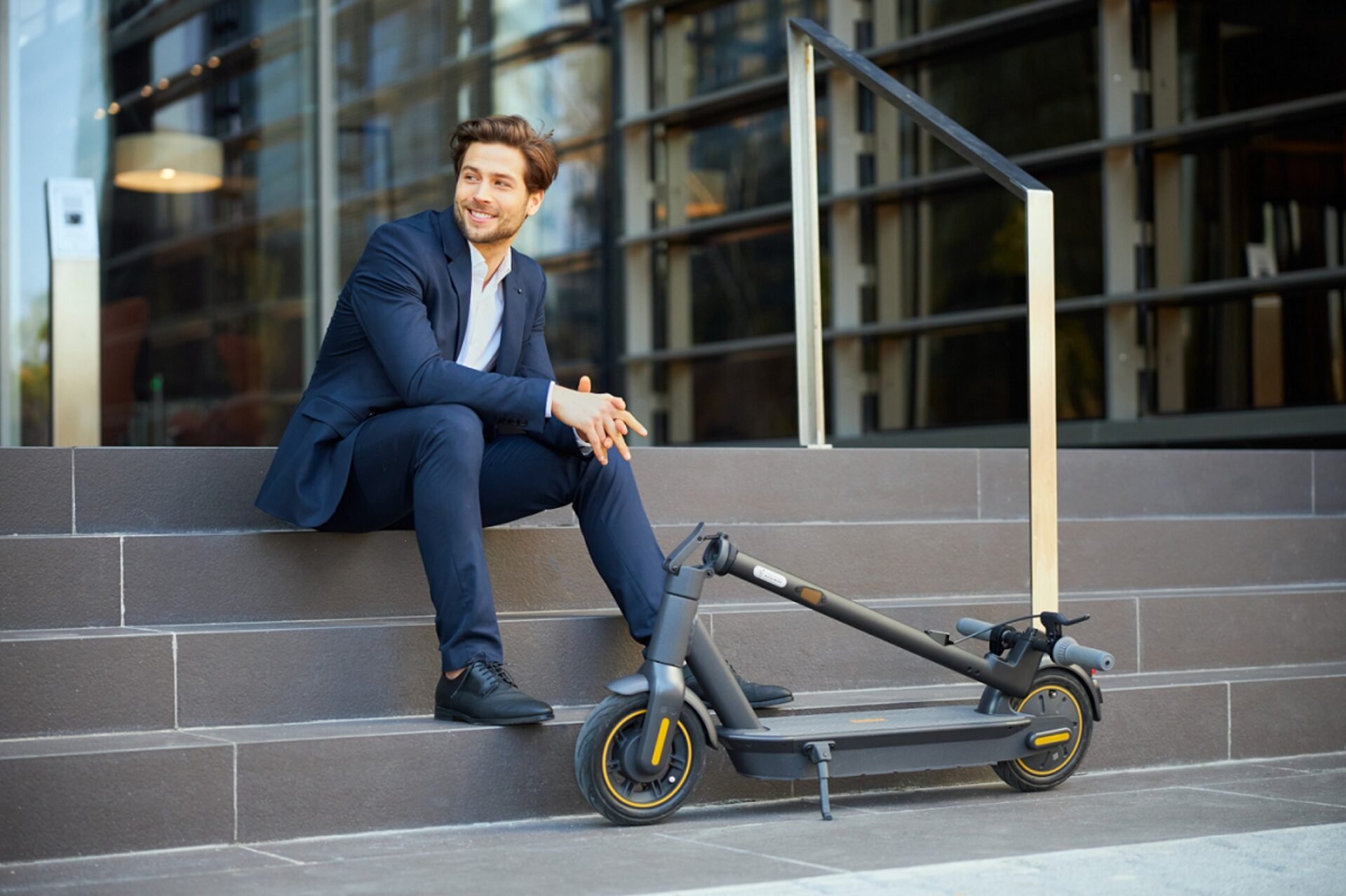
Performance
When it comes to performance, the NIU KQi3 Pro and the Segway Ninebot MaxG30 are pretty similar. After all, both scooters have the exact same size motor (350 W), which influences all sorts of other factors, such as the top speed, acceleration, and more.
So, it’s fair to say both fare rather well in terms of performance. While they may not be as powerful as more recent models, you can still expect to enjoy a smooth ride as you zip along the city streets. Furthermore, both models are known for being highly dependable, so you should feel completely at ease when using either for long commutes.
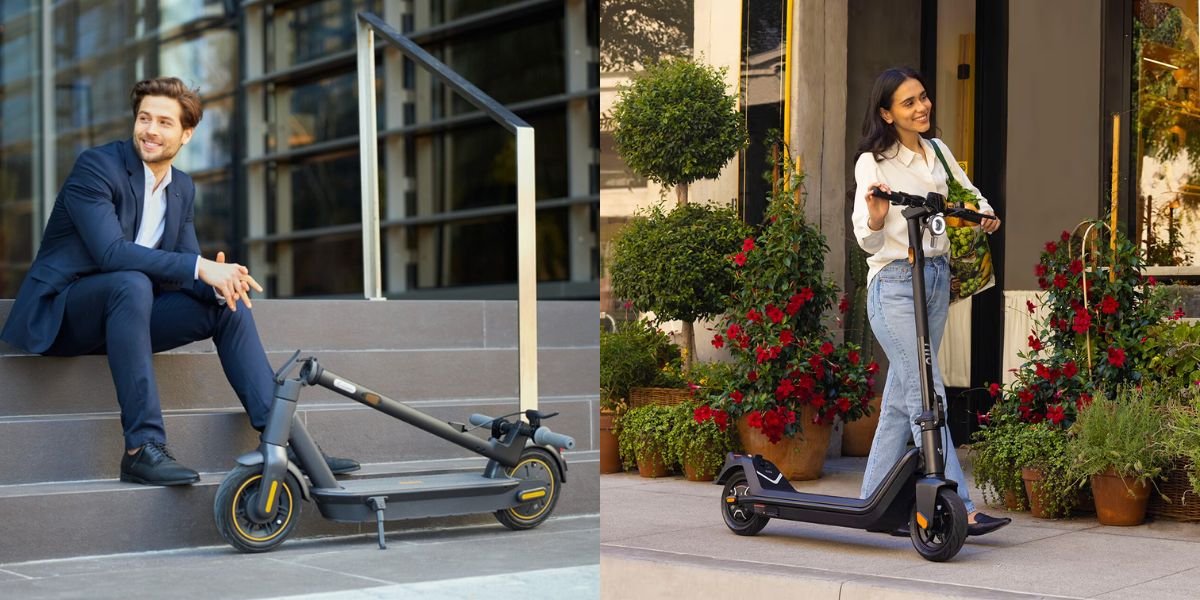
Speed and Acceleration
Once again, speed is an arena in which both scooters are on par. However, the Segway Ninebot Max G30 has a maximum speed of 18.6 mph, while the NIU KQi3 Pro has a top speed of 20 mph, giving it that slight edge.
In most cases, this difference would be negligible, but if you have a need for speed, you may find yourself leaning more toward the NIU KQi3 Pro, as you'll be able to reach your destination just that little bit faster.
Both can get you from 0 mph to 15 mph in approximately five seconds, which is the standard for the average electric scooter.
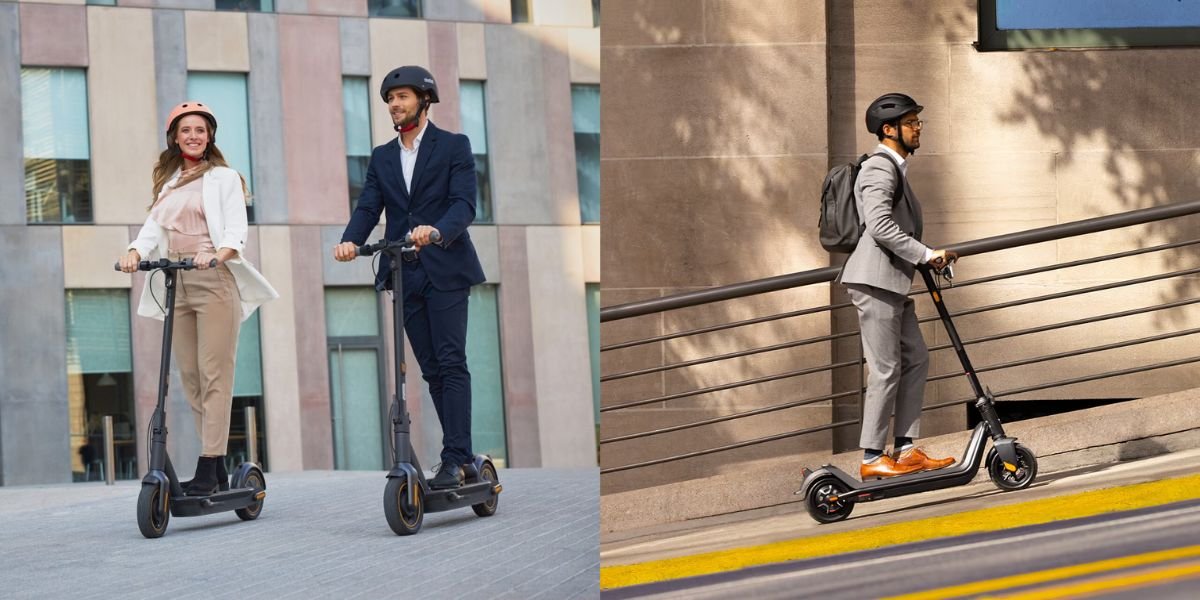
Range and Battery
Now onto one of the differences between the Segway Ninebot Max G30 and the NIU KQi3 Pro: the battery size. The KQi3 Pro's battery is a standard 486 Wh, while the Ninebot Max G30 boasts a 551 Wh battery. The size of the battery directly impacts the battery life and how far you can travel on one charge.
Long-range commuters may prefer the Segway Ninebot Max G30, as it offers an impressive range of 40.4 miles on a single charge, which can easily take you from one side of a major city to the other. The KQi3 Pro comes in close behind with a range of 31 miles per charge. Just keep in mind that the maximum range will also depend on the average speed, hills, and rider weight.
Both scooters make use of long-lasting and rechargeable lithium-ion batteries that have all sorts of protective features, such as overcharge protection, temperature protection, and more. Despite the Segway's battery being slightly larger, both take roughly six hours to fully charge.
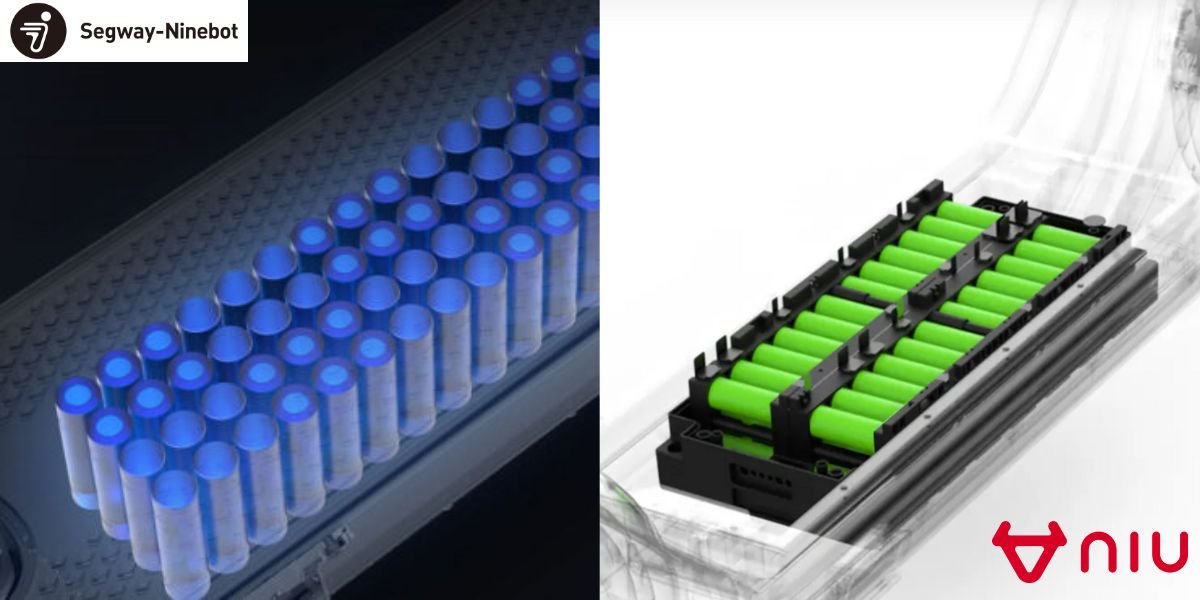
Hill Climbing
Do you live in a city with loads of hills? Then, you'll want to choose an electric scooter with a wide climbing angle. The wider the climbing angle, the steeper the hills your electric scooter can handle. Both the KQi3 Pro and the Ninebot Max G30 have a climbing angle of 20 degrees.
A 20-degree angle is pretty standard when it comes to an electric scooter, and you should be able to climb decent hills without any issues. If you are worried, you could always ask to perform a hill test when you test-drive the scooter to see how much power it has when going up an incline.
Braking
Fortunately, both electric scooter models in this comparison offer powerful brakes for your safety. The Segway Ninebot Max G30 makes use of a front drum brake and an electronic rear fender brake. On the other hand, the NIU KQi3 Pro has a mechanical front and rear disc brake, each with its own lever for easy operation.
While their braking systems are slightly different, you should be able to adapt to either one without much effort, as both offer dual braking, which is known to offer better safety, steering, and usability. Just remember to use the front and back brakes simultaneously for controlled deceleration.
Both scooters also have regenerative brakes, which actually help charge up your battery instead of drawing from it—an innovative feature that is a major benefit for any rider!
Build Quality
Just by looking at both of these models, you can tell that they were made by manufacturers who knew exactly what they were doing. The robust design, complete with chunky tires and wide decks, is a recipe for success. Plus, if you look after your electric scooter in accordance with the manufacturer's guidelines, you should have no problem enjoying it for many years to come.
Let's have a look at the aesthetics, materials, and durability to get an idea of each scooter's overall build quality.
Aesthetics
These days, the look of your scooter is very important as it says something about your own personal style. Fortunately, both the KQi3 Pro and the Ninebot Max G30 are good-looking scooters and should remain stylish for many years to come.
Both have a classic, robust design with large wheels, wide handlebars, and sizable decks. The major difference in design is the fact that the KQi3 Pro's Halo light acts somewhat as a centerpiece, while the Max G30's LED light is more subtle.
Like the other scooters in the Segway Ninebot series, the G30 is mostly black with pops of yellow in the rims. NIU KQi3 Pro, on the other hand, comes in 'ultra black' and 'rose gold'.
Both scooters look great from any angle and are very eye-catching.
Materials and Durability
When it comes to materials, both models in this comparison have been made primarily with aluminum alloy—a material that is known for its lightweight durability, making it perfect for the construction of portable electric scooters.
Many of Segway's other scooters are made from stainless steel, which can add to their durability but take away from their portability.
Both scooters also have lithium-ion brakes and rubber handlebars. Thanks to the durable materials used in their construction, the NIU KQi3 Pro and the Segway Ninebot Max G30 will last you at least a decade or so if you look after them properly.
Ride Quality
When you are riding your electric scooter around the city, you want to feel comfortable—and you definitely don't want to feel as though a tiny pebble could cause you to come crashing down! So, how do the NIU KQi3 Pro and the Segway Ninebot Max G30 fare in terms of ride quality?
You’ll be happy to know that both offer a comfortable riding experience thanks to their tubeless pneumatic tires, wide decks, and shock absorption. Whether you're riding on smooth pavement or slightly rougher terrain, you should be able to get from point A to point B quite easily.
Tires
One of the best things about both these scooters is that they make use of self-healing tires! These air-filled tires use a special sealant in the tire lining to prevent air from leaking out, even if you've got a puncture. This makes them perfect for cruising the city streets, where you could encounter any number of potential obstacles.
As long as your punctures are less than 0.2'' (6 millimeters) deep, you don't run the risk of deflation. The NIU KQi3 Pro and the Segway Ninebot Max G30 have impressively wide tires, coming in at 9.5" and 10", respectively. The chunky tires play a major role in the overall comfort you'll experience when riding.
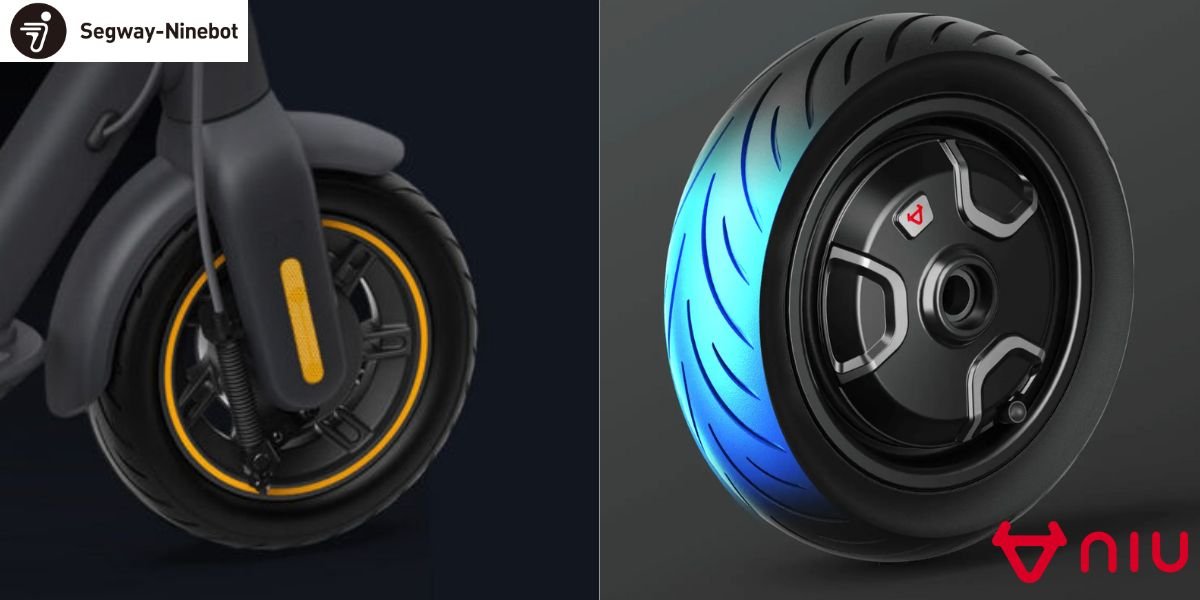
Suspension
While neither electric scooter in this comparison has suspension, the large tires do act as shock absorbers. Not having suspension may seem like a drawback, but only around 35% of electric scooters offer this feature.
If you are looking to add suspension to your scooter, you could always purchase one of the many DIY suspension kits available online. Just keep in mind that any at-home modifications may impact your warranty.
If you intend to handle tough terrains, you may want to look for an entirely different electric scooter that comes with full suspension.
Deck Space
Larger deck spaces are perfect for taller riders and those who prefer a wider stance. The scooters in this comparison have the following deck dimensions:
- Segway Ninebot Max G30: 6.8"W × 19.8"L
- NIU KQi3 Pro: 6.7"W × 22.4"L
It's clear to see that both decks are larger than what's offered by the average electric scooter. Take note of the fact the KQi3 Pro is quite a bit longer than the Ninebot Max G30, which ensures you can have plenty of different riding stances.
If you're looking for the most compact option, which can be beneficial when it comes to storage, then you may want to go for the Segway Ninebot Max G30.
Portability
Most riders need to carry their electric scooter at some point in their journey, whether up a flight of stairs or a short distance across rough terrain. For this reason, portability is exceptionally important for any scooter rider.
Luckily, both models are conveniently portable, thanks to their unique folding mechanisms and carrying handles. You can fold your scooter with just one fluid motion, making it easy to carry and store, no matter your space limitations.
However, we have to highlight the NIU KQi3 Pro's innovative folding mechanism, which has been specifically patented. It makes it slightly easier to use than the Segway Ninebot Max G30, but they are pretty much on par.
If you need to carry your scooter from time to time, you should also consider how much it weighs. The NIU KQi3 Pro weighs 44 pounds, while the Segway Ninebot Max G30 is 41.2 pounds. While this difference isn't major, you may feel it should you need to carry your scooter over a long distance.
Weather Resistance
Although the Segway Ninebot Max G30 has a weather resistance rating of IPX5 (which means it can handle light rain and shallow puddles), the manufacturer warns against riding your scooter in the rain, as the warranty doesn't cover water damage. The front and rear mudguards help against splashback.
And what about the NIU KQi3 Pro? NIU scooters have a weather-resistant rating of IP54, which means the scooter is resistant to splashes and dust. While you shouldn't ride it in heavy rain, you could probably get away with riding in a drizzle.
No matter how robust your scooter appears, you should avoid riding it through deep puddles and in wet weather conditions. Rather, wait for the rain to pass or opt for another mode of transport so you don't risk damaging your electric scooter.
Apps
Almost everything these days comes with a dedicated online application, including both of these scooters! The apps offered by Segway and NIU are some of the best on the market, allowing you to check your battery health, look at your rider statistics, and change your settings with just a few clicks.
The LED screen and Bluetooth connectivity make it easier than ever to connect your smartphone, headphones, or other electronic devices. Both the Segway app and the NIU app are also compatible with iOS and Android devices.
Another great feature offered by both apps is the ability to lock and unlock your electric scooter remotely. This ensures that it never gets into the wrong hands.
Lights
Lights are an often overlooked but incredibly important feature that ensures your safety and visibility to motorists and pedestrians on the road.
Let’s start off with the NIU KQi3 Pro, which is known for its iconic Halo light that stays on at all times. Additionally, the 'inner' light can be turned on at night or on cloudy days to help light your way.
On the other hand, the Segway Ninebot Max G30 is often praised for its 2.5 high-brightness LED headlamp, which is designed to illuminate your journey. Despite the brightness of this light, the manufacturer does not recommend riding at night, which could be a drawback depending on your intended use of the scooter.
Both models have modest taillights as well as braking lights to ensure your safety on the road. Remember to always use your lights at the appropriate moments. Neither scooter comes with indicators, so you may need to use your hands to indicate which direction you plan on turning.
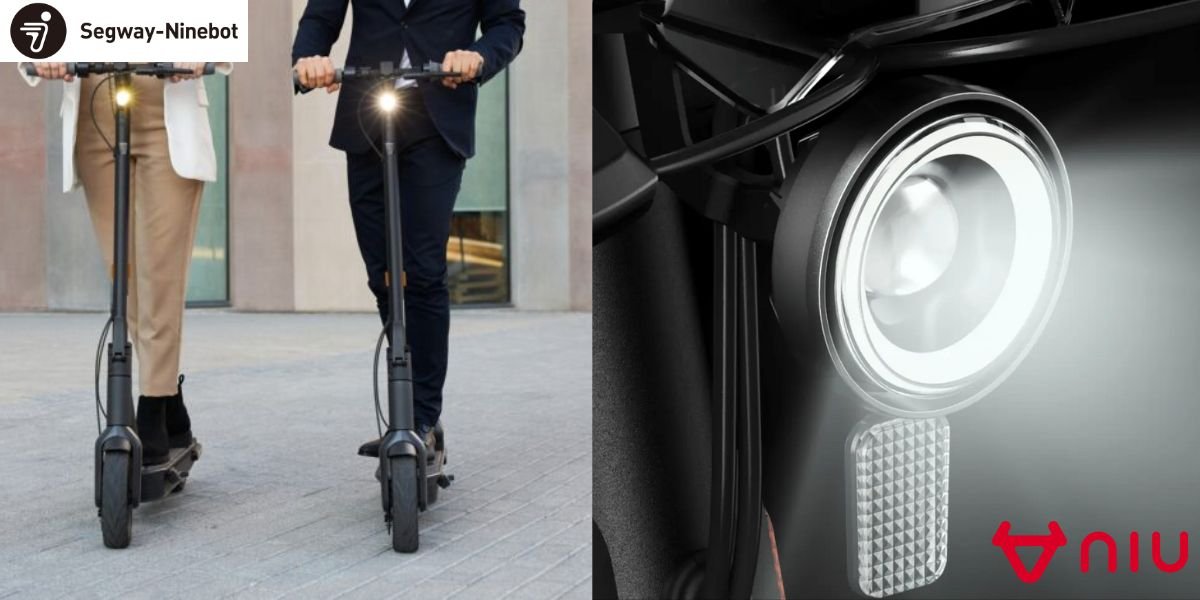
Maintenance
Thanks to the durable materials used in the construction of both of these scooters, you don't need to worry too much about maintenance. However, you should take the time to read the manufacturer's guidelines and ensure you keep your scooter clean. If something breaks, you should get it fixed as soon as you possibly can.
For both the Segway Ninebot Max G30 and the NIU KQi3 Pro, you should try to service your electric scooter every 3,000 miles or so, at a registered service station. Services typically include a brake inspection, wire inspection, and various other checks, in addition to a professional cleaning service.
Safety
It's clear that both Segway and NIU have prioritized rider safety by including features like responsive brakes, wide tires, and bright headlights. Just keep in mind that you should always wear a helmet and obey local electric scooter laws when riding your electric scooter if you want to ensure your safety.
Neither one of these scooters can be considered 'safer' than the other, as it is more about how you ride them. They come equipped with all the safety features you need, so it's up to you to use them properly and follow the manufacturer's guidelines.
Ideal Riders
Both scooters come with all the performance features that both novices and experienced riders can benefit from. However, there are a few specific features you should take into consideration when determining which electric scooter is the right choice for you.
Firstly, let's discuss the maximum weight restrictions. The KQi3 Pro can handle a rider weight of 265 pounds, while the Segway Ninebot Max has a maximum weight capacity of 220 pounds. Even if you are just a few pounds heavier than 220 lbs, you should opt for the KQi3 Pro over the Segway Ninebot Max G30.
Another thing to take note of is how many miles you plan to travel each day. Long-range commuters may prefer the Segway Ninebot Max because of its larger battery, which allows you to travel over 40 miles a day on a single charge.
Verdict
So, which one scores higher in our books: the NIU KQi3 Pro vs Ninebot Max G30?
At the end of the day, it's quite clear that the NIU KQi3 Pro comes out on top in terms of power, speed, and functionality. However, we can’t write the Segway Ninebot Max G30 off just yet, thanks to its broader range and larger battery.
So, it all comes down to your personal preferences and specific needs. The KQi3 Pro may suit a more experienced rider, while the Segway Ninebot Max G30 may be better suited for a long-distance commuter. However, both scooters offer value for money and a comfortable ride, so you really can't go wrong either way!
Also, keep in mind that both NIU and Segway make a wide range of other models, so there are plenty of other options out there to suit your budget and personal preferences. For example, if you are looking for something with a bit more speed, the NIU KQi3 Max could be a great electric scooter for you.
Still not sure where to start? Why not rent an electric scooter to get an idea of your likes and dislikes when it comes to various features? Renting allows you to familiarize yourself with various modes without having to make a long-term commitment, making it the perfect option for those new to scooters.

Stay current with the latest U.S. electric scooter laws in our 2025 guide. Updated annually since our first comprehensive guide, ensuring you have the most recent state and city regulations to ride responsibly”

The Slack Core 920R is currently the fastest electric scooter in 2025 that you can purchase without the need for pre-order.

Our selection of the best electric scooters 2025 spans the fastest e-scooters to the most portable ones, the ones designed for city riding and off-road, the best scooters for rain, budget electric scooters for students, and more powerful ones for skilled riders.

The Unagi Voyager is the best lightweight electric scooter for adults and teenagers. It is the ultraportable sequel to its predecessor, the Unagi Model One Classic.

If you're wondering whether an electric scooter with a seat is right for you, this is a detailed article that would suit your need.

Understand which personal electric vehicle is best, the choice between an electric bike or electric scooter might already be made for you by some critical factors, including portability and storage capacity.

In the U.S., most states don't require a license. For those that do, they usually just ask for a regular driver's license or a learner's permit.

Yes, you can bring an electric scooter on a plane, but it needs to have a lithium battery smaller than 100 watt-hours, which most don't.

Manufacturers advise against riding electric scooters in the rain. The main reasons are: water can fry the electronics, make the ride dangerous, and void your warranty.

The basis and the premise of my work is that we either operate out of love or we operate out of fear...Time is currency. The coolest thing about the scooters is that it's really quick, and it goes uphill. From there, traveling more efficiently and having a good time doing it--I think that's the most important thing.

Cynthia Leu has a full plate. A tech worker by day, Cynthia spends her off time balancing the parallel lives of a powerlifter, entrepreneur, mental health advocate, and more. Riding Unagi helps this USMC veteran cut down on everyday…

https://www.youtube.com/watch?v=7m2hVBE62LY Rasheed Muhammad is sick of Los Angeles traffic. In order to preserve his sanity, Rasheed has traded his everyday driving habit for the portable and beautiful Unagi Model One. It’s an essential accessory for navigating LA streets -- and…

Rich Lee, Co-Founder of San Francisco’s SPRO Coffee Lab, wants to share his love for coffee with the world. He depends on riding Unagi to avoid the hassle of navigating the parking crunch in the booming Mission Bay neighborhood.…















